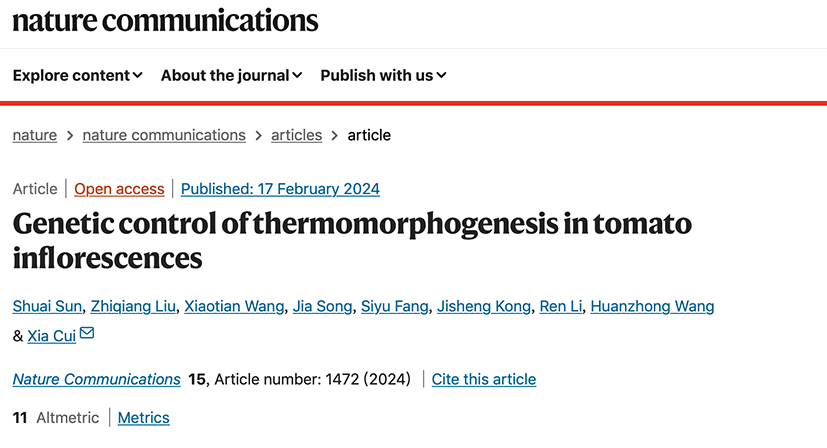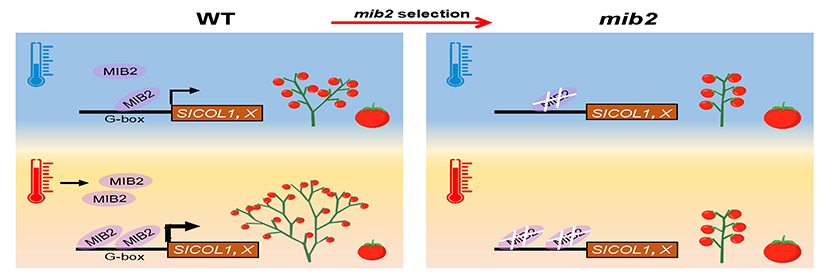The number of inflorescence branches plays a pivotal role in determining both the quantity and the weight of the fruits, making it an essential metric for evaluating the quality of tomato varieties. High temperatures impact the development of tomato inflorescence morphology, yet studies on how these temperatures convey signals and affect the creation of flowers and inflorescence branches are scarce. Recently, the Quality Molecular Improvement Group at the Institute of Vegetables and Flowers, Chinese Academy of Agricultural Sciences has discovered a quantitative trait locus, qMULTIPLE INFLORESCENCE BRANCH 2 (qMIB2), which modulates the branching of tomato (Solanum lycopersicum) inflorescences in reaction to elevated environmental temperatures. These results have been published in Nature Communications.

In this study, we identify the quantitative trait locus qMULTIPLE INFLORESCENCE BRANCH 2 (qMIB2), which modulates inflorescence branching in response to high ambient temperature in tomato (Solanum lycopersicum). The non-functional mib2 allele may have been selected in large-fruited varieties to ensure larger and more uniform fruits under varying temperatures. MIB2 gene encodes a homolog of the Arabidopsis thaliana transcription factor SPATULA; its expression is induced in meristems at high temperature. MIB2 directly binds to the promoter of its downstream gene CONSTANS-Like1 (SlCOL1) by recognizing the conserved G-box motif to activate SlCOL1 expression in reproductive meristems. Overexpressing SlCOL1 rescue the reduced inflorescence branching of mib2, suggesting how the MIB2–SlCOL1 module helps tomato inflorescences adapt to high temperature. Our findings reveal the molecular mechanism underlying inflorescence thermomorphogenesis and provide a target for breeding climate-resilient crops. This represents another significant advancement in the field of inflorescence morphological development by the team, following MIB1 (Horticulture Research, 2021; The Plant Cell, 2023) and TOE1 (Plant Physiology, 2023).

Associate Researcher Sun Shuai and Docto Candidate Liu Zhiqiang, both from the Institute of Vegetables and Flowers, Chinese Academy of Agricultural Sciences, share first authorship of the study, with Researcher Cui Xia serving as the corresponding author. This research received funding from National Natural Science Foundation of China Grant (31930099), the Projects of International Cooperation and Exchanges NSFC (32120103010), the National Key Research and Development Program of China (2022YFF1003002), and the National Natural Science Foundation of China (32102403).
Original link: https://www.nature.com/articles/s41467-024-45722-0
By SunShuai(sunshuai01@caas.cn)